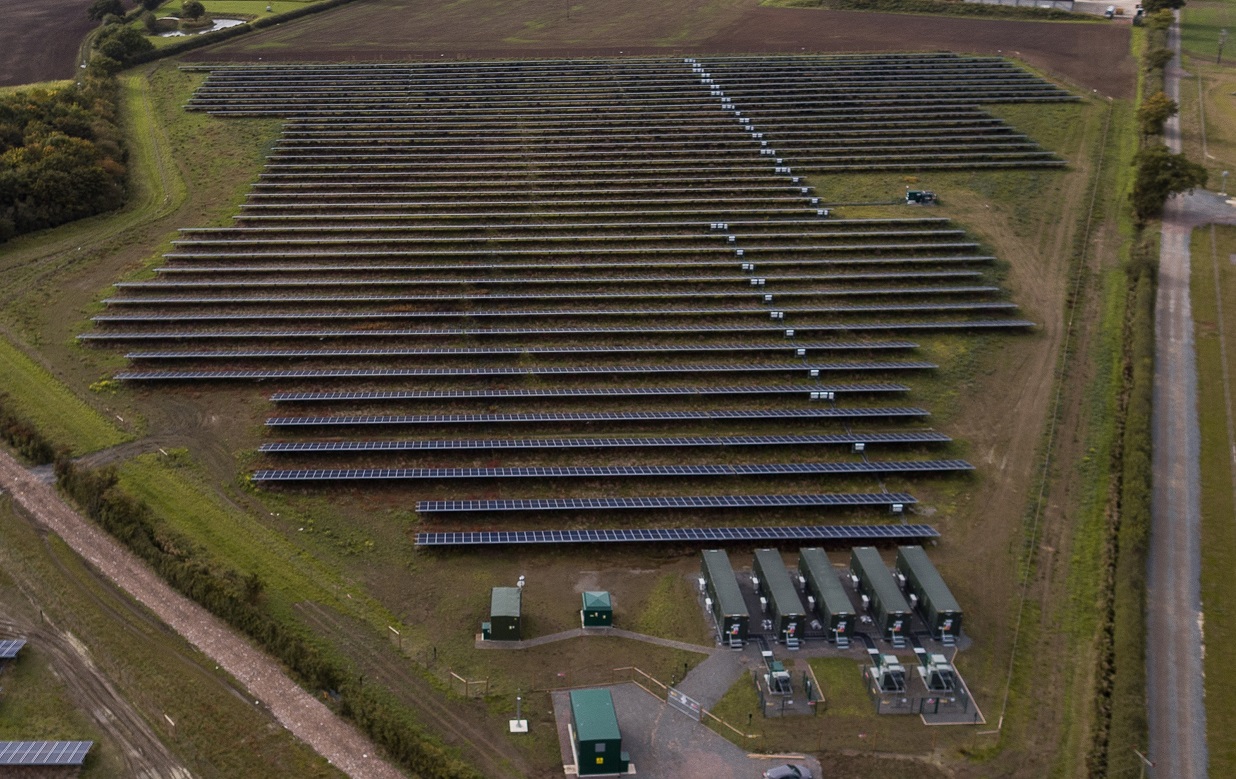
Image: Anesco.
Subsidy-free solar farms are at risk of failing to be viable on the wholesale market owing to ‘price cannibalisation’ during periods of high output, according to a new report by consultancy Cornwall Insight.
“Wholesale Power Price Cannibalisation” argues that by the 2030s, reductions in achievable wholesale power revenues at times when there is high renewables output will challenge the delivery of both subsidy free solar and wind power projects.
However, such intermittent projects will deliver renewable, weather-driven generation at the same time which Cornwall Insight says will have a depressive influence on the wholesale electricity price.
Such instances have already been reported in the UK, such as 3 May 2018 when a period of higher than forecast generation from both solar and wind drove the system prices into negative territory, reaching -£69/MWh for two half hourly settlement periods.
This can have the effect of pushing less efficient and higher cost conventional plants off the system, owing to renewables’ low operating costs which can make them competitive in wholesale markets when they operate.
“The greater the fraction of output on the system to meet demand from intermittent generation at any given time, the greater this effect becomes,” Cornwall’s report explains.
However the reduction and removal of subsidies for these projects, which have in the past protected them from the effect of price cannibalisation, is likely to begin to play against the business case for renewable energy projects.
With the Renewables Obligation already closed, and the feed-in tariff set to expire in April 2019, subsidy-free projects will rely far more on value earned from wholesale power and fall foul of the effect their own intermittent generation has on prices.
While the effect is likely to be most acute on onshore wind without access to Contract for Difference auctions, the report states that solar projects will also be affected as onshore wind continues to be subsidised by the CfD mechanism.
The report argues that a representative 5MW standalone solar project will experience wholesale market revenues reducing 22% from 2018 levels by 2031.
“Our analysis presents a wholesale market with increasing price volatility as the sources of dominant supply switch between ‘must run’ subsidised generation and flexible, short-run marginal price-based generation,” writes Tom Musker, the senior modeller behind the report.
“This creates a [high risk] environment with significant implications not just for generators, but for all parties including offtakers, suppliers, end-users and the system operator. With so much activity being focussed to the periods close to delivery the forward market cannot provide sufficient hedge for those that require price certainty and stability.
However, the report adds that battery storage could play a role mitigating cannibalisation effects for intermittent renewable generators by shifting their generation out of these high generation periods to earn greater value across the rest of the wholesale market.

